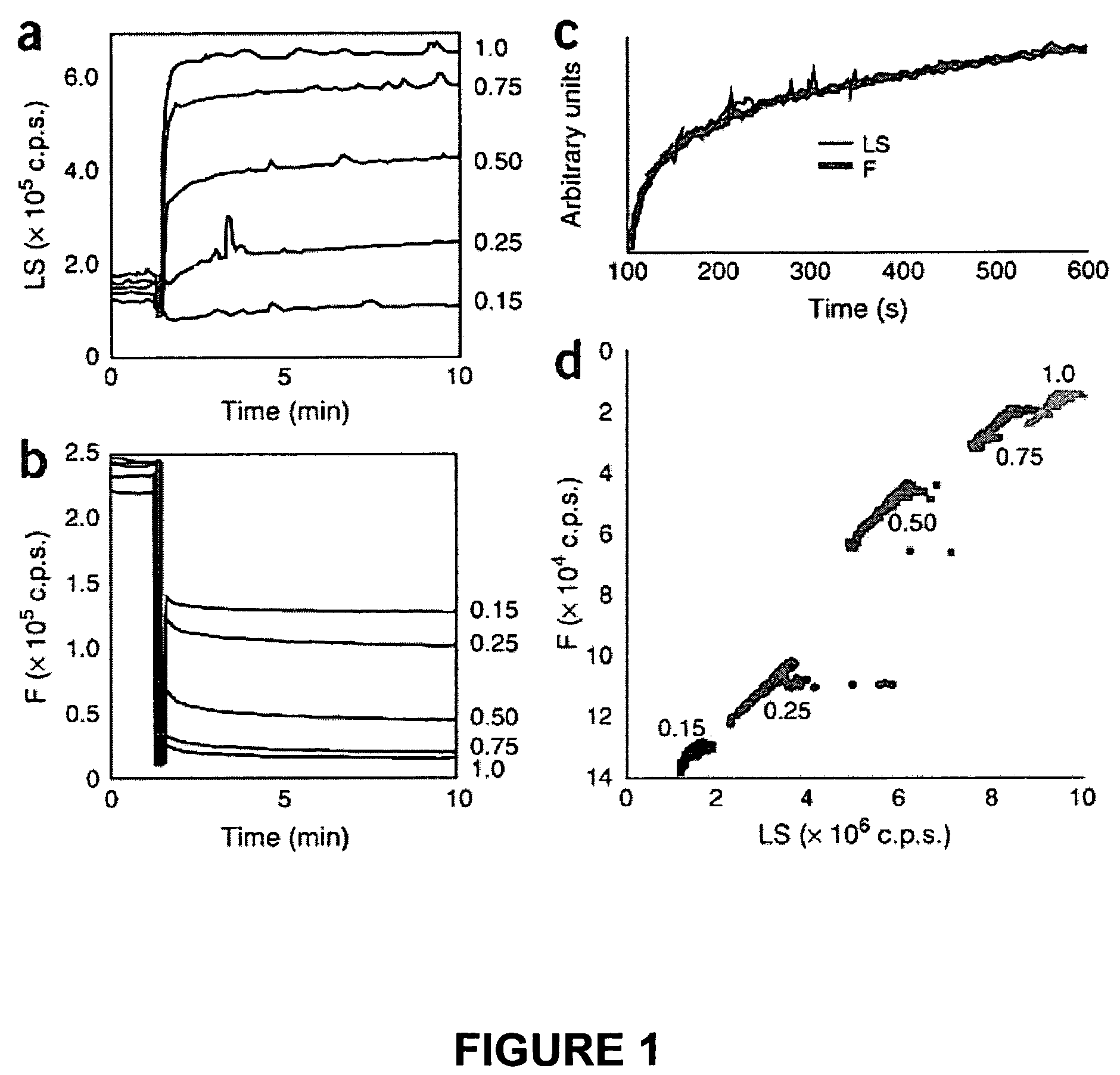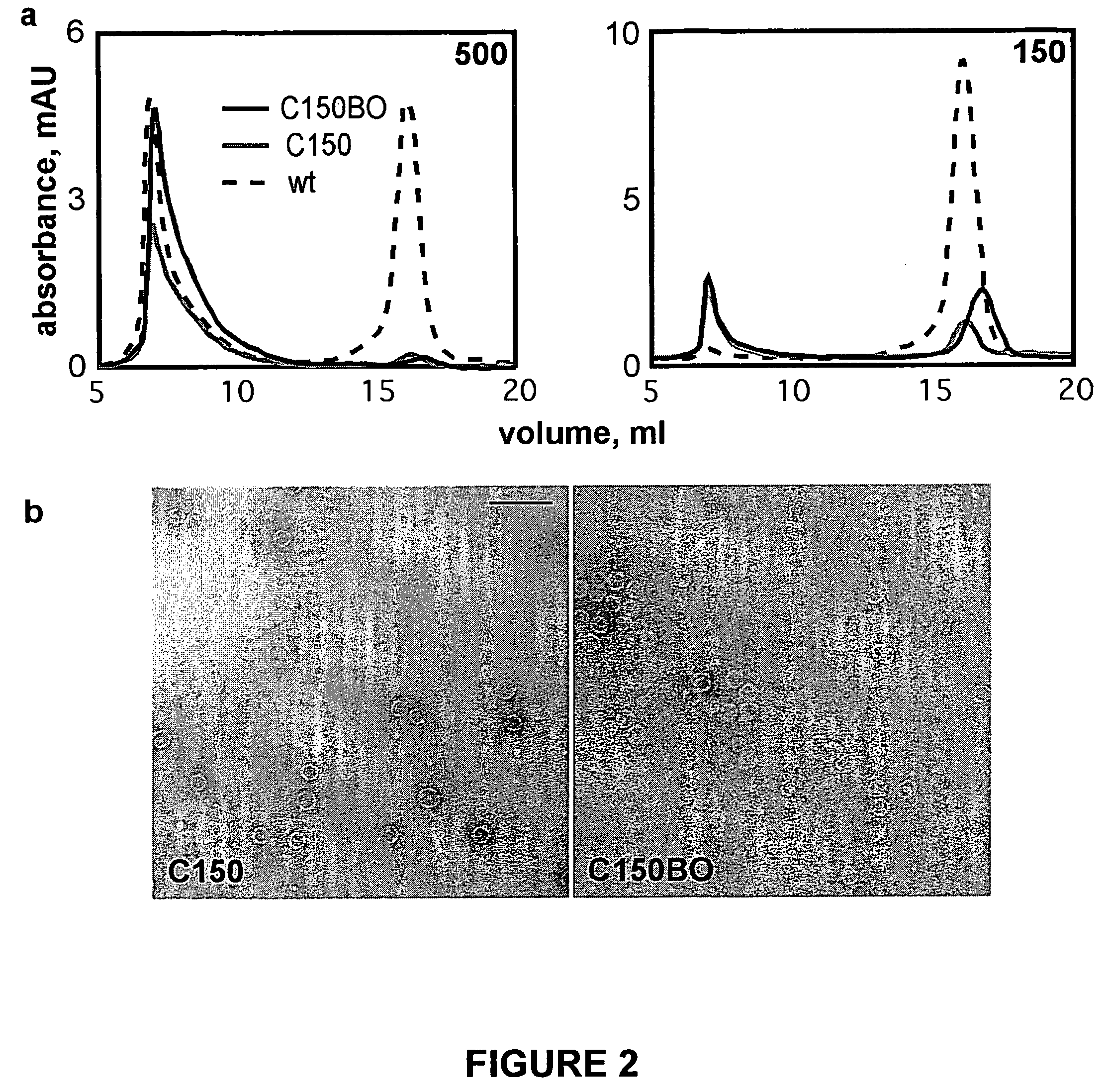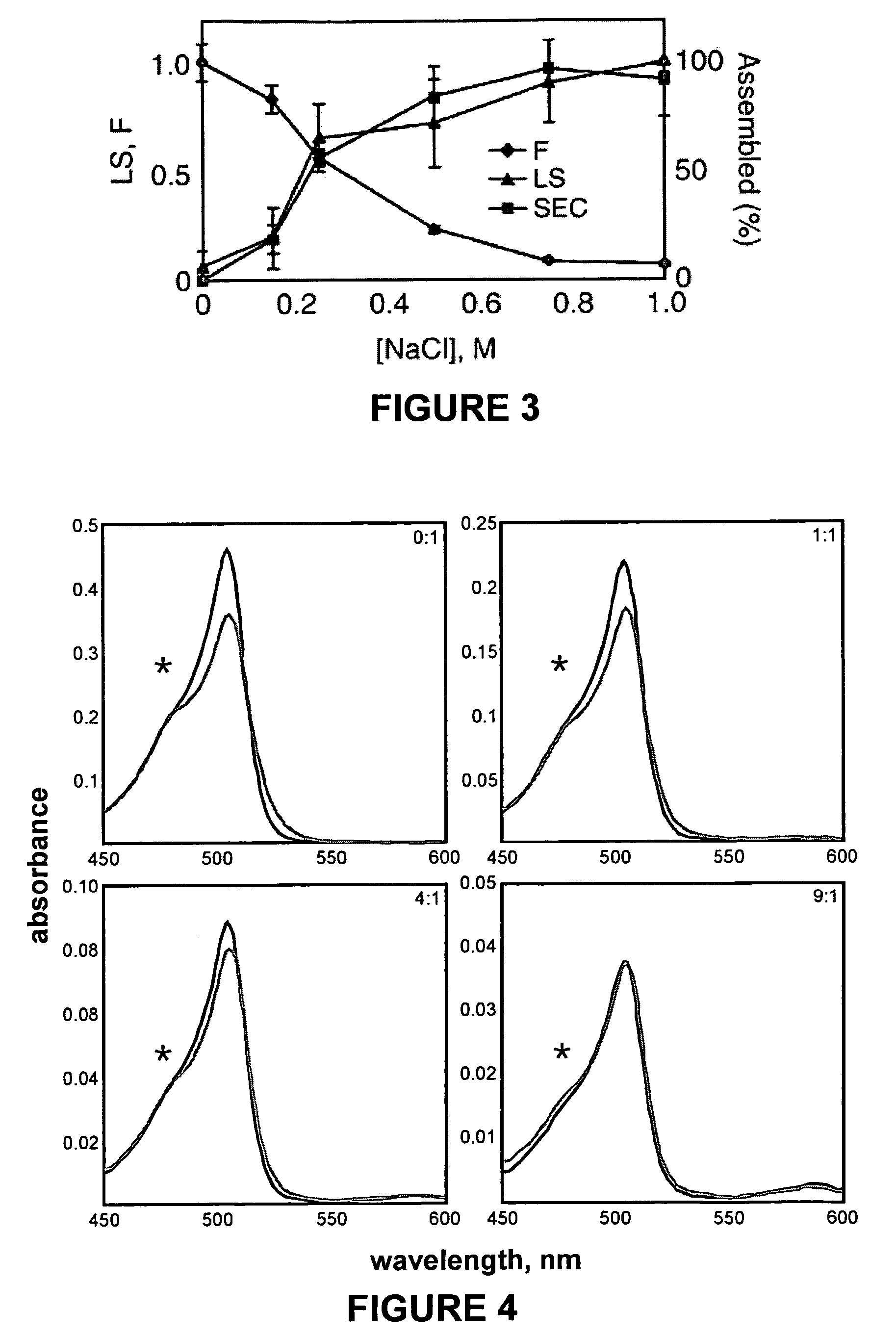Methods for detecting compounds that interfere with protein aggregation utilizing an in vitro fluorescence-based assay
- Summary
- Abstract
- Description
- Claims
- Application Information
AI Technical Summary
Benefits of technology
Problems solved by technology
Method used
Image
Examples
example 1
Methods for Example 1
[0083]Mutagenesis: For simplicity of chemical labeling, the cysteine residues (C48, C61 and C107) in the assembly domain of HBV strain adyw core protein (amino acids 1-149 (Zlotnick et al., 1996), core protein 149) were mutated to alanine, inserting a unique cysteine residue at the C terminus (C150). Mutagenesis was performed using QuikChange Multi (Stratagene). Mutagenic primers are described in Table III (IDT DNA technologies). Mutations were confirmed by dye terminator dideoxy sequencing (DNA Sequencing Core, Oklahoma Medical Research Foundation). The resulting mutant protein is referred to herein as C150.
[0084]
TABLE IIIMutagenic Primers.SEQIDMutationPrimer1NO:C48ACTCCTGAGCACGCCAGCCCTCACCATAC2C61AGCAATTCTTGCCTGGGGAGACTTAATGACTC3C107AGTGGTTTCACATTTCTGCTCTCACTTTTGGAAG4insC150GGAGACTACGGTTGTT AAGGATCCGGCTGC51Mutated Codons are underlined. Inserted codons are shown in bold italic.
[0085]Protein expression, purification and dye labeling: Wild-type and mutant trunca...
example 2
[0089]Utilizing the methods described herein above in Example 1, several other compounds were tested for their ability to interfere with HBV capsid assembly utilizing in vitro assembly reactions with the labeled capsid polypeptide C150BO.
[0090]The assays were carried out as described in Example 1, except as described herein after. Samples were read in 3 minute intervals for one hour and again at 24 hours using a Tecan filter-based plate reader with a standard fluorescein filter set.
[0091]FIG. 7 illustrates a typical experiment comparing different compounds, including some heteroaryldihydropyrimidine (HAP) derivatives. In this experiment, assembly conditions induced 25% (±5%) assembly in the absence of drugs. Compounds B-22, B-24, B-25, and the non-HAP compound B-27 significantly enhanced assembly. Under these conditions, the urea control experiment only showed marginal assembly inhibition.
example 3
[0092]The protocols described above in Examples 1 and 2 were developed for a mutant HBV core protein in which the native cysteines were eliminated and a C-terminal cysteine was appended. Because the assays of the present invention are applicable to any virus, or protein, for which there is an in vitro assembly assay, this example provides methods for adapting the above-described assays to other systems. For almost every virus, assembly juxtaposes the N- or C-termini of the capsid proteins (see the VIPER database for examples (Reddy, 2001), making these ends particularly suitable for labeling. It is not necessary to mutate native cysteines if they are not accessible to free dyes; this may occur when the native cysteines are inaccessible to solvent or are already tied up in stable disulfides. Accessibilty of native cysteines can be tested using Eliman's reagent (see below). An N- or C-terminal cysteine can be incorporated using standard molecular biological techniques. As an alternati...
PUM
| Property | Measurement | Unit |
|---|---|---|
| ionic strength | aaaaa | aaaaa |
| ionic strength | aaaaa | aaaaa |
| pH | aaaaa | aaaaa |
Abstract
Description
Claims
Application Information
 Login to View More
Login to View More - R&D
- Intellectual Property
- Life Sciences
- Materials
- Tech Scout
- Unparalleled Data Quality
- Higher Quality Content
- 60% Fewer Hallucinations
Browse by: Latest US Patents, China's latest patents, Technical Efficacy Thesaurus, Application Domain, Technology Topic, Popular Technical Reports.
© 2025 PatSnap. All rights reserved.Legal|Privacy policy|Modern Slavery Act Transparency Statement|Sitemap|About US| Contact US: help@patsnap.com



